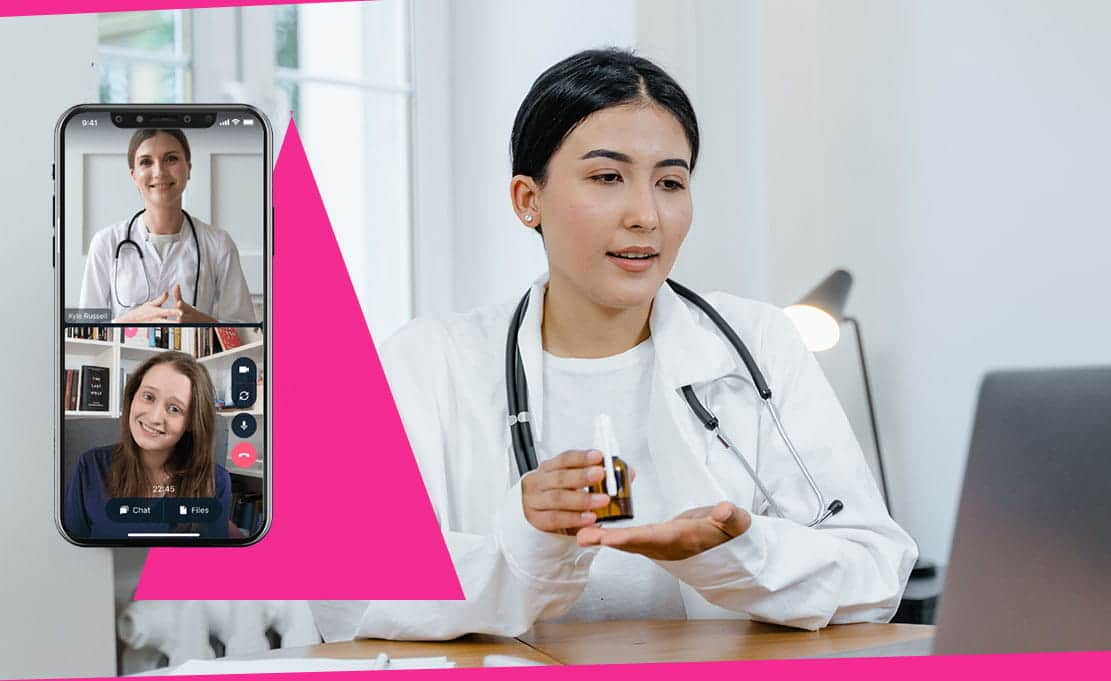This telemecine platform is an integration-centric project: one system takes data on video communication between the patient and the doctor, transforms the data, creates an invoice for another system, and sends a link to the doctor with all the necessary information.
Telemedicine Platform
This telemecine platform is an integration-centric project: one system takes data on video communication between the patient and the doctor, transforms the data, creates an invoice for another system, and sends a link to the doctor with all the necessary information.
Business Challenge
The customer, as a start-up company, was looking for a professional service provider with experience in telemedicine app development. The main idea of the platform was the following:
- The SaaS platform has a modular structure, and each module has its specific scope of functionality
- E-health suppliers should be able to connect to this solution on a license-based model to use different parts of the solution.
In the short term, the client planned to create a telemedicine platform for multidisciplinary remote care, offering also a wide range of measuring devices. In the long term, the customer’s goal was to grow to a recognized professional provider of e-health solutions with the best up-to-date sensors and AI algorithms.
Solution
The main goal of full-stack .NET developers was the implementation of the SaaS project from scratch. In the first stage, the software developers had the task of implementing the MVP of the telemedicine app to enter the market and check viability. After the successful release of the MVP version at the end of April 2022 team was able to move on to the second stage – the development of the additional functionality to extend the software capabilities to meet the requests of current interested companies and to attract new potential customers.
In brief, the first MVP version of the telemedicine platform had the following options:
- Video communication as part of the telemedicine application allows patients to have online consultations with their doctors
- The app transforms the data to create the invoice for another system, and after this, the doctor receives the link with all the needed information
All functionality of the telemedicine platform:
- Video consultations with the recording and documenting option
- Secure in-app messaging
- Compatibility with desktops, mobile devices, and tablets
- Role-based access to the solution
- Booking of the appointment and laboratory tests
- Feature for creating dynamic graphs (widgets) with information about the patient’s condition, which is automatically obtained from various certified home-use medical devices (pressure, oxygen in the blood, body weight, heart rate, etc.)
- Feature for auditing user actions while using the app (who and when changed/added/deleted records, logged in or out of the system, etc.)
- Integration with third-party resources that provide live data about the patient from wrist devices connected to the phone (Apple Watch, Samsung watch, MI band, etc.)
- Push notifications
- E-prescribing
- Learning module with the knowledge base, medical training videos, and courses
- Analytics and reporting
- Internet of medical things (IoMT) device integration (support of different medical devices and wearables to transmit health data)
- AI-based features
- Compliance with HIPAA, GDPR, support of HL7 for integrations with EMR and HIS systems
In short, the responsibilities/tasks of the Chudovo software development team:
- Participation in architecture development and design
- Front-end and back-end software development
- Azure DevOps CI/CD configuration
The suppliers of e-solutions can join the telemedicine platform if they meet the HL7 data exchange criteria. After connecting, they get access to the functionality. The customers can also propose new modules, devices, etc. The platform has a modular architecture that makes it flexible and scalable. It can be easily integrated into e-health ecosystems. The customers can decide which services they want to activate and use.
Business Impact
The outcome of the telemedicine app development project & results:
- The MVP version of the platform was released in 4 months. After the release, the customer continued to promote and advertise his product in different ways to e-health providers (e.g., providing a trial period for a few months or licensing for the separate modules’ usage) and signed contracts with several interested companies. MVP received positive feedback and met regulatory compliance and security standards.
- The team worked in 2-week sprints and consistently released and updated the platform with new features.
- The platform has become a full-fledged product. The platform has evolved into a full-fledged product, currently used by over 800 healthcare providers.
